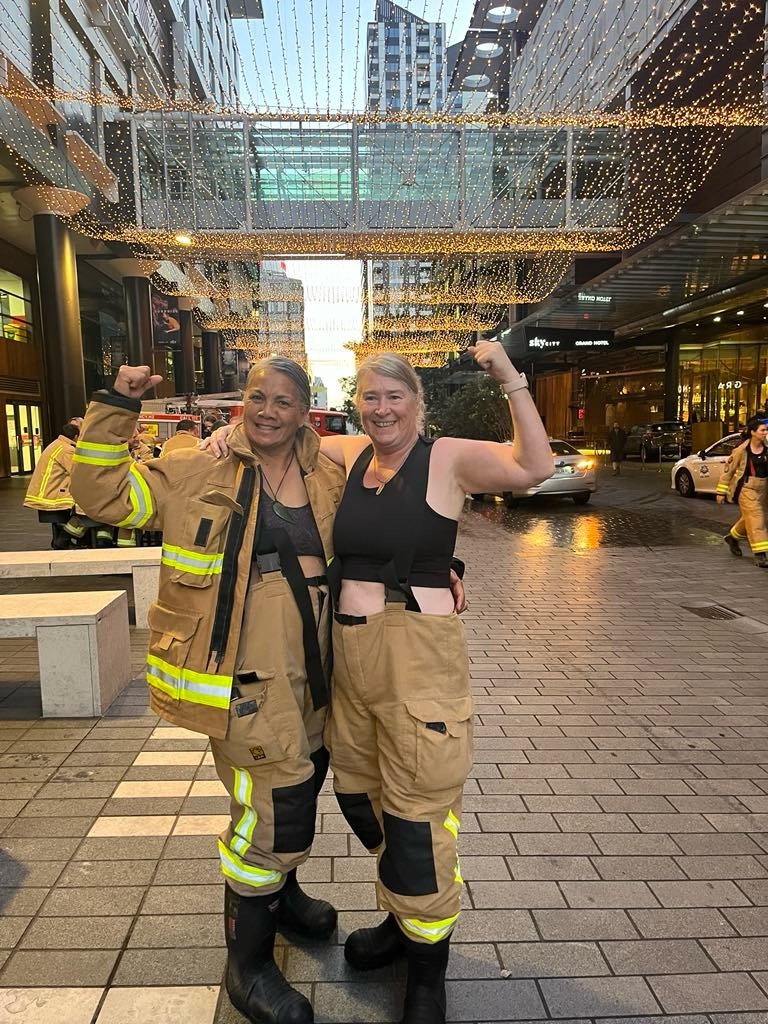HEALTH AND SAFETY.
By Karen Allan.
Full-time commercial beekeeper Paula Stapleton moved from Ireland to New Zealand with her husband and three children 14 years ago. Two years ago she finally realised her lifelong dream to become a firefighter when she joined as a volunteer in Ahipara, Kaitaia.
Paula says she had wanted to become a firefighter since she was a teenager working in a factory in Ireland after leaving school. It was a Korean factory that made videotapes, situated in a forest, so fire safety training courses were a requirement of the job. She would have become a volunteer firefighter sooner but knew her husband would have worried too much about her safety.
After her husband died five years ago, Paula took some time out for herself to travel before returning to Ahipara to continue working the beekeeping operation she and her husband previously ran together. She now runs around 5000 hives for mānuka and kānuka honey production and avocado pollination.
Paula says having some flexibility around working hours, and now living alone, makes it feasible to respond to callouts. She adds that most callouts happen in evenings and weekends anyway.
The greatest number of calls happen from November to April when the terrain is dry. The fireban that started on 16 December is one attempt to minimise the danger of scrub fires. There’s already been a few big fires in the hills in Ahipara this season, including one that the fire trucks couldn’t access, so they had to just watch the helicopters work on the blaze.
Paula says a lot of callouts are related to people lighting fires to cook that get out of control. People throwing cigarette butts out of car windows have also started roadside fires that have spread further into scrubland.
One particularly sobering experience was attending a fire started by a generator that engulfed a garage on a property before spreading to the scrub, says Paula. The garage burnt to the ground but the fire crew held the hose on the house and managed to save it.
Her firefighting experience has made her more aware of the potential fire dangers associated with beekeeping. Paula says she now doesn’t allow her staff to use smokers in the dry Northland summer months. This isn’t a popular decision with her staff but she says smokers are just too dangerous in the conditions.
Paula encourages anyone thinking of joining the fire service as a volunteer to go for it.
“Do it! I love it! I absolutely love it! I love being part of the community, part of the family.”
There is a family atmosphere and a willingness to help each other amongst the crew, says Paula. And helping the community and building friendships at both weekly trainings and at training events around the country has made it a rewarding experience.

Firefighting beekeeper Paula Stapleton (right) after completing the Firefighter Sky Tower Challenge. This involves climbing up the 51 flights of stairs (1103 steps) of Auckland’s Sky Tower in full firefighting gear (about 25 kilograms). The annual challenge raises money for the treatment of leukemia and blood cancer. Photo supplied.
Paula’s fire safety tips for beekeepers
- When you drive into a site, always park so you can leave quickly if necessary. Don’t park facing in, always park facing home.
- In winter, the sugar syrup tanks on the back of your truck can be used to put out a fire.
- Take a weed sprayer backpack filled with water and a cup of washing-up liquid to the apiary. This creates a foam that can put out a fire quickly. The standard fire extinguisher found in most cars wouldn’t be enough to put out an apiary fire in dry conditions.
